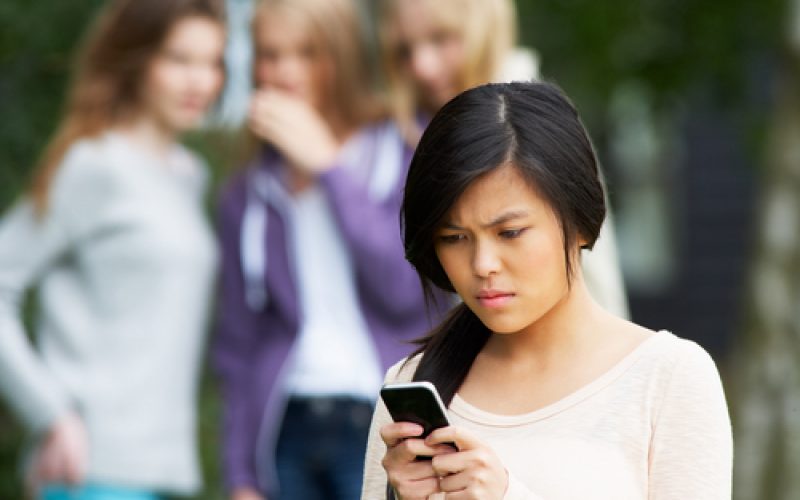MD, Surgeon in Chief, Arkansas Children’s Hospital
As a kid, I was smaller than most of my classmates and was definitely considered bookish. I had a late August birthday, which meant I was also a good bit younger than some of the other kids. Not only did these traits set me apart, but they also made me a target for bullying.
I can still remember the heat in my face when other kids would pick on me and try to start a physical fight. I was angry and hurt. I fought back a couple of times, but that was never helpful. So I became skilled at running — by necessity.
Bullying was bad enough all those years ago. And the core of bullying hasn’t changed — there will always be bigger, tougher kids with huge egos looking for a fight. But oh how the manner in which kids bully each other has evolved! It’s difficult for me to imagine how much harder it is for kids to endure today in a world where others’ jokes and threats are broadcast for a tremendous audience through the Internet and social media.
I don’t ever recall headlines while I was growing up — or even in the initial decade or so after medical school — about kids being pushed to suicide attempts because bullying had made them lose hope. Sadly, we see these stories all too often in the news now.
While bullying has clearly always existed, it’s amplified by the megaphone of social media. When your perception of reality is formed mostly by the images and feedback in your smart phone — and during a time when you’re especially concerned with peer approval — what others say about you in those forums seems particularly damaging.
Maybe a half dozen kids witnessed an older classmate try to fight with me in junior high. But how would it have felt if nearly an entire class of 150 seventh graders had seen it transpire and continued to gossip about it and shun me? This is what kids are dealing with today.
We know from research that bullying no longer occurs in the school environment alone. Kids bully each other several miles away while sitting on the sofa at home — sometimes while right next to Mom or Dad watching TV. This is one reason it is essential that families know what their kids are doing online.
So what can parents do to protect their kids?
First, parents should monitor their child’s Internet activity by checking in on their Facebook, Twitter, Instagram and any other social media accounts. They should set or obtain passwords to their children’s accounts and be honest with them that they’ll be watching their activity — both to protect them from bullying and to ensure they’re not hurting others.
As each child is different, it will be important for parents to reach a decision together with the child about the age or maturity benchmark at which that monitoring will cease. This can be a difficult conversation, but it’s important for parents to show older teens they can trust them as they become more independent and ready for the real-world.
Parents will also want to be aware of children’s actions and look for an increase in missed school days, illnesses, anxiety, appearance or even revenge-seeking behavior. If your child is being bullied, he may be embarrassed to discuss it with you. Remind him that no one deserves to be treated this way, and it’s not in the least bit his fault.
Just like my small stature and late birthday made me a target, children who stand out among their peers in any way are often the ones most likely to be bullied. This could be because of their appearance, race, sexual orientation, abilities or just about any other defining characteristic. Kids can be cruel no matter the circumstances when people are different from them.
If you feel that your child has been cyberbullied, it’s a good idea to take screen shots of the messages and save texts with threatening languages or images. Document all of these communications and then block the bully from your child’s online profile.
The Injury Prevention Center at Arkansas Children’s Hospital recommends that families report incidents of cyberbullying to a child’s school administration. In some scenarios and depending on severity, parents can also take the documented evidence to local law enforcement for prosecution.
I can’t help but think that more togetherness and family time will help parents have a better idea of whether their child is becoming the victim of this kind of behavior. It can also provide a great opportunity for opening a conversation about how we deal with troubles in a healthy way.
When my sons were in middle and high school, we frequently watched the show “Smallville” together. Set in Superman’s hometown when Clark Kent was a teen, the show brought up several themes about being different and coping. I loved that my kids could see that even a childhood hero like Superman had his struggles — and his bullies — and that they could learn healthy responses from these fictional stories.
Every family has some way they can carve out bonding time and learn from one another. Tailgating, ski trips, camping, board game nights — it doesn’t matter what the format is. If we can use this time to gently explore what’s happening in the lives of our teens and tweens, maybe we can prevent some of the strife and even tragedy that modern bullying can clearly cause.
Sam Smith, MD, is chief of Pediatric Surgery at Arkansas Children’s Hospital and a professor of Surgery at the University of Arkansas for Medical Sciences. He writes a column each week covering a variety of kids’ medical concerns. If you have a topic you’d like him to consider addressing, email achconnect@archildrens.org.











